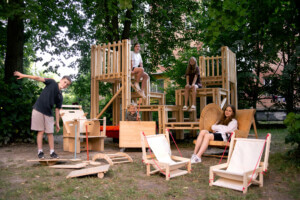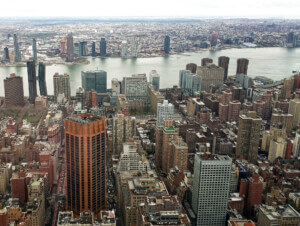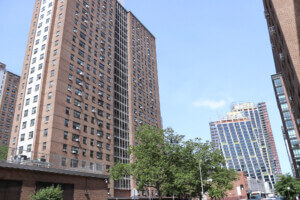A new exhibition now on view at the Center for Architecture explains how money moves across New York’s public building sector. It’s a complex system that, if you’re not directly involved in it, can seem unnecessarily confusing and slow. Mapping Community: Public Investment in NYC demystifies how things like libraries, schools, and parks pop up, as well as the players behind them.
Curated by Faith Rose, former executive director of the NYC Public Design Commission, and David Burney, professor of urban placemaking management at the Pratt Institute, the showcase walks viewers step-by-step through the process of capital planning. It’s spread out over two floors and utilizes a very clear and graphic layout so that the information is distilled to the audience in a digestible yet still visually distinctive manner.
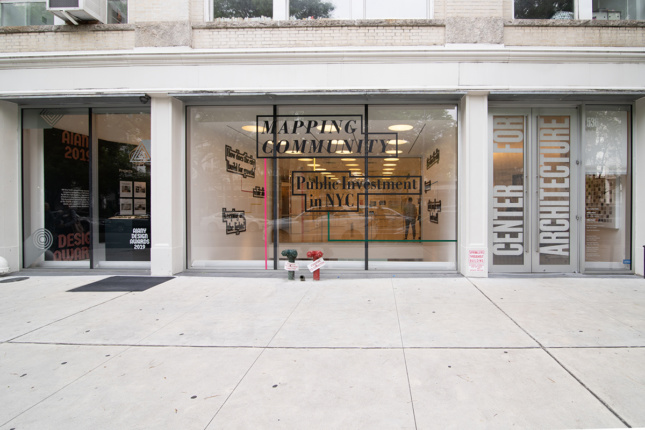
“No one entity is responsible for the entire process, and even people deeply involved in one part aren’t always aware what the other pieces entail,” said Rose in a statement. “I don’t believe there has ever been an exhibition that tracks the mechanisms of capital planning from start to finish.”
There probably hasn’t.
That’s likely because New York City boasts one of the largest local government systems in the United States and its beast-of-a-procurement-process is less than transparent. But things are changing and this big-picture view of the “ecosystem of agencies” involved reveals the work it takes to make tangible improvements to the city. This knowledge, for better or for worse, arguably gives a viewer (or in this case, a local resident), the agency to insert themselves into the planning process and help shape their own neighborhood.
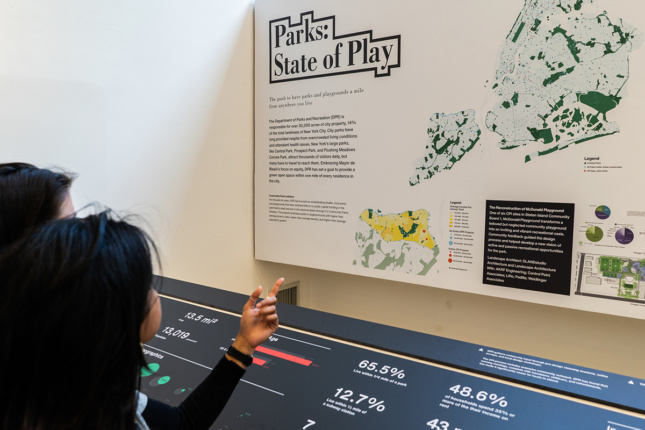
To communicate the complexity of the subject, the curators pieced together an in-depth look into one public project per borough, separated by typology, and detailed the planning process at the community level. One of those case studies centers on Essex Crossing, the massive, mixed-use development on Manhattan’s Lower East Side. A contentious construction project from the start, it was once an empty six-acre lot but now houses everything from luxury condos by SHoP Architects, to an affordable housing complex by Beyer Blinder Belle, a senior living community by Dattner Architects, and the newly-opened Essex Market.
This part of the exhibition tells the story of how Manhattan Community Board 3 and other local organizations fought over a series of negotiations with the NYC Economic Development Corporation, as well as the site’s developer, to get a new K-8 school in the program. Here, it explains why the Department of Education has currently decided not to move forward with building a new school. It also reveals how local needs in other areas can affect capital projects.
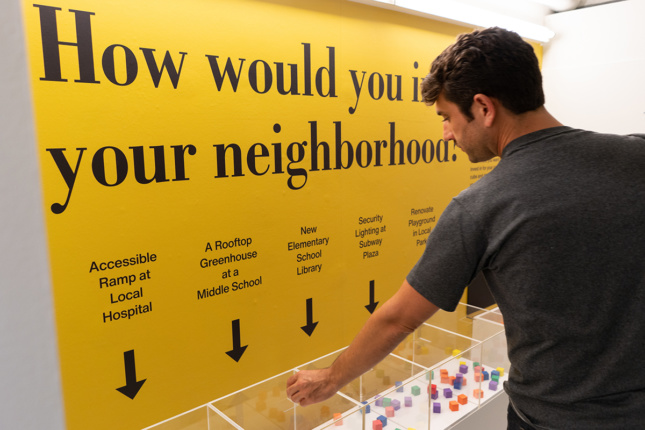
Whether it was the right thing to do or not, garnering this information allows locals and exhibition audiences to better understand how the 1.9-million-square-foot Essex Crossing has come to be, what its future may look like, and how they can have a say in that. According to Hayes Slade, 2019 AIANY President and principal of Slade Architecture, that’s the key to improving the city.
“New Yorkers should feel empowered to be part of community-building,” she said, “and that is only possible if they are knowledgeable of the process.”
Mapping Community will be on view through August 31.








